Tesla Talk 9/24/19: The Tesla Model S Is The New American “Dream Car”
The map below is based on geotagged twitter data (over 100,000 tweets) tracking discussion of “dream cars” and related hashtags (like #dreamcar) across the country. As you can see from the map, the Tesla Model S dominates, winning 20 states compared to the next “dream car,” the Ford Mustang, which won 13 states. While only so much can be derived from social media data, it’s safe to say that it shows a changing tide in how Americans view cars, and there there is indeed a rising interest in EVs, which is most definitely because of the Tesla brand.
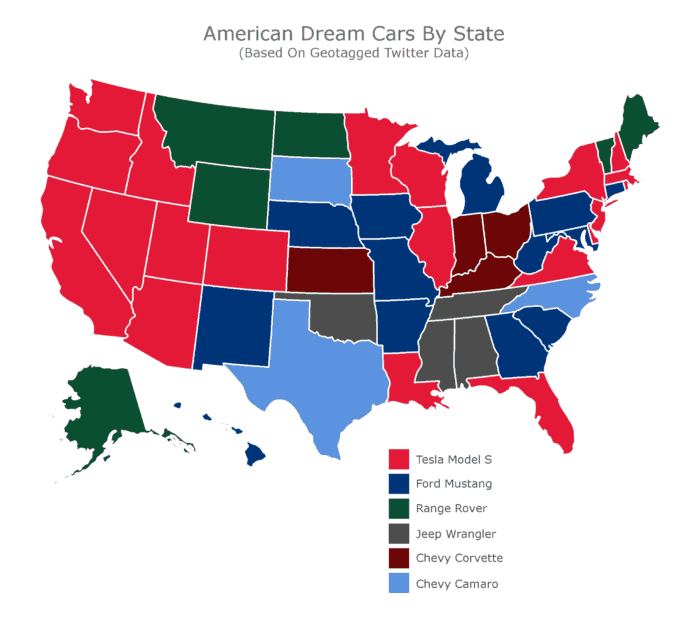
Tesla Motors is the youngest automaker in the country. In fact, prior to Tesla, the last successful American car startup brand was Ford, in 1903. Even in their short time as an automobile manufacturer, the company is already enormous. With Morgan Stanley calling Tesla Motors, “the world’s most important car company,” and nationwide surveys branding the Model S as the “Most Loved Vehicle in America,” it’s easy to see why the company is already so successful.
Some of the success is due in part to CEO, Elon Musk. He’s a PayPal cofounder that is now the face of this company. The question is who founded Tesla? Let’s take a closer look at the inner workings of this modern car company.
In Brief: Tesla Motors History
The First Model In Tesla History
In 2003, Marc Tarpenning and Martin Eberhard founded Tesla. The company has also considered JB Straubel, Ian Wright, and Elon Musk to be cofounders as well. They had the inspiration to create a new vehicle after the GM recall and destruction of the EV1 electric car in 2003.
Tarpenning and Eberhard funded the startup themselves through the what is known as Tesla’s round of investments referred to as Series A. Musk then joined the team in early 2004 as the company’s chairman, member of its board, and in some operational roles as well. He became the company’s controlling investor by contributing the majority of its $7.5 million raised with his personal funds.
In July 2005, Tesla entered into a production contract for the Roadster. During this time, Group Lotus was assigned to produce cars without a powertrain, otherwise known as “gliders.” The Tesla Roadster utilized an ACE motor that was taken from Nikola Tesla’s 1882 design.
The Roadster (2008) became the first car in production that used a lithium-ion battery. It was also the first production electric vehicle that featured a range of more than 200 miles on a single charge. From 2008 through March 2012, the company sold over 2,000 Roadster in more than 30 countries. They discontinued further orders in the summer of 2011 in the United States.
Investments
Musk continued to lead the investments with the $13 million Series B round. He then drove part of the $40 million fundraising round in 2006. This third round combined some investments from other entrepreneurs such as co-founders from Google, Larry Page and Sergey Brin. In 2007, a fourth round was conducted, adding another $45 million.
Eberhard was asked to resign from the board of directors in August 2007. He became the President of Technology until he left entirely in January 2008. At the same time Tarpenning left the company after serving as the CFO and Vice President of Electrical Engineering.
To replace Eberhard, Tesla appointed Michael Marks, then later Ze’ev Drori as CEO in 2007. Drori brought the company back to profitability by reducing the workforce 10%. In 2008, Musk joined the ranks as CEO and one of his first orders of business was laying off another 25% of the workforce. Then, at the end of 2008, the fifth round of investment was added, bringing about $40 million and avoiding bankruptcy.
In early 2009, the company raised $187 million. They also were able to deliver 147 cars. Elon Musk invested another $70 million at the time. Also in 2009, Tesla sold Daimler AG less than 10% equity stake for $50 million. This transaction saved the company once again. Toyota also invested similar amounts later in 2010.
During the summer of 2009, Tesla received $465 million worth of loans with low interest from the United States Department of Energy. Their funding arrived in 2010 and helped to support the production of Model S, plus the commercial powertrain development.
At the end of 2012, Tesla employed only 3,000 full-time workers. By the end of 2016, that number grew to more than 30,000 employees.
Model S and Model X
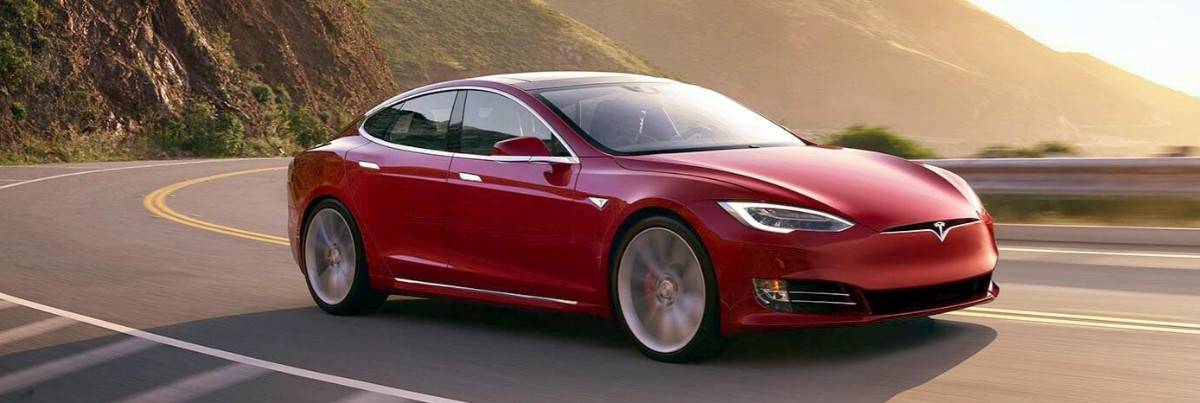 The first public offering of Tesla Motors on NASDAQ was on June 29, 2010. 13,300,000 shares of stock was issued at the price of $17 per share. This raised an additional $226 million in funds for the company. Then, in the summer of 2012, Tesla started shipping the Model S sedan. Global sales reached 100,000 by December 2015.
The first public offering of Tesla Motors on NASDAQ was on June 29, 2010. 13,300,000 shares of stock was issued at the price of $17 per share. This raised an additional $226 million in funds for the company. Then, in the summer of 2012, Tesla started shipping the Model S sedan. Global sales reached 100,000 by December 2015.
The Model X, which is the company’s crossover SUV also began selling in September of 2015. By early 2016, Musk held $28.9 million in shares, totaling about 22%.
Model 3
In the Spring of 2016, the company unveiled the Model 3. Within a week, reservations worldwide equaled 325,000 units. Because of this demand, Tesla moved its annual unit plan of 500,000 by an additional two years leading into 2018.
In February 2017, Tesla Motors changed names to Tesla. Then, in March, Tencent Holdings Ltd. Purchased 5% stake in the company for $1.8 billion. At the time, they were China’s most valuable company. During 2017, Tesla surpassed GM and Ford based on market capitalization. In June, they appeared on the Fortune 500 list for the first time as well.
The first deliveries of the Model 3 began at the end of July 2017. During the week before its debut, stock-market values declined by over $12 billion. This was caused by disappointed investors. It appeared that the Model 3 introduction adversely affected the sales of the Model S and Model X.
By October 2017, the company only delivered just over 200 Model 3s which was far less than what was planned. In November, Musk advised the investors that there was a delay due to the battery. The difficulty stemmed from issues with the robots working its assembly line. According to Elon Musk, the company needed to rewrite the software for the modules as well. At the time, the director in charge of battery engineering, Jon Wagner, resigned from the company.
As of November 2017, Bloomberg estimated that Tesla was burning through $8,000 per minute. This could also be viewed as $480,000 per hour. While the Model 3 production didn’t start as planned, in April 2018, Musk increased production numbers by 20%.
Technology
Tesla specializes in electric technology for its vehicles. This starts with the batteries. Unlike most of the other auto manufacturers, Tesla doesn’t use the individual large-sized battery cells. Instead, they operate with thousands of cylindrical, tiny, lithium-ion commodity cells. This is similar to what is found in some consumer electronics.
Their cells are cheaper and lighter when compared to most standard versions by taking away some of the safety features. The company says that their elements were redundant and unnecessary. Panasonic supplies the majority of the cells located in the Model S, Model X and the Model 3. In early 2016, the cost of batteries were $200 per kWh.
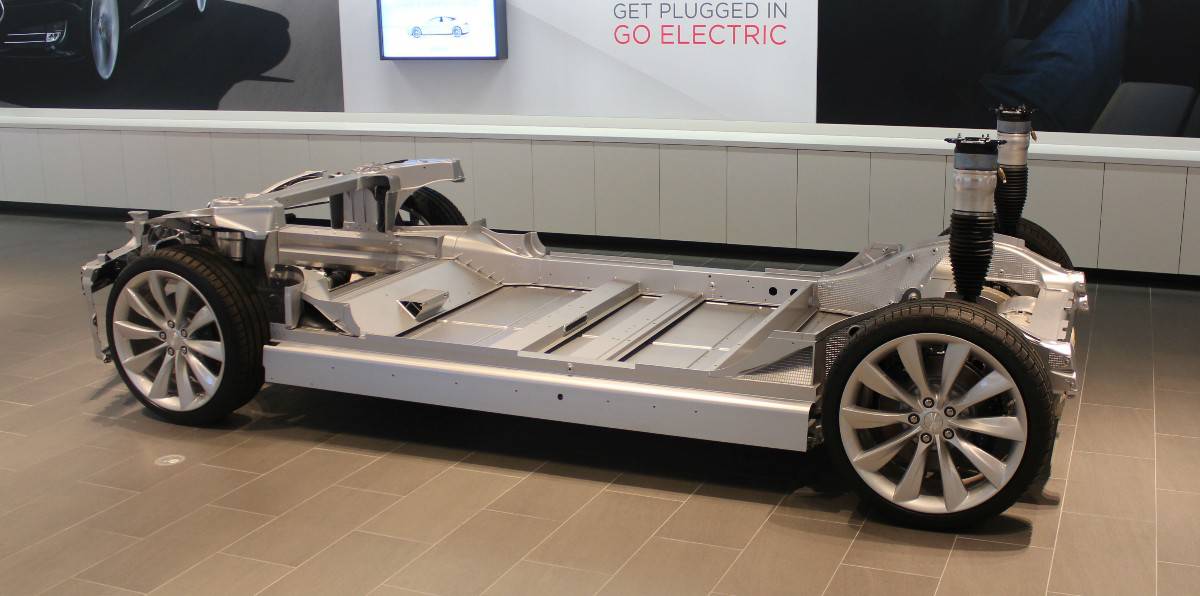 The batteries get placed below the vehicle’s floor to save trunk and interior space. This design increases the risk of damage from impact or debris. That’s why the Model S featured a 0.25-inch aluminum-alloy armored plate. The batteries were expected to have a life of 10 to 15 years.
The batteries get placed below the vehicle’s floor to save trunk and interior space. This design increases the risk of damage from impact or debris. That’s why the Model S featured a 0.25-inch aluminum-alloy armored plate. The batteries were expected to have a life of 10 to 15 years.
Tesla created two versions of its electric motors for their vehicles. One was the induction motor featuring a three-phase, four-pole AC combined with a copper rotor. The other is a permanent magnet motor which is used in the Model 3.
Tesla also created an Autopilot system which gives drivers a semi-autonomous assist. This was introduced in 2014, but Tesla replaced the software and sensors in 2016. The Autopilot system included adaptive cruise control and lane departure warning in 2017. It also featured Autosteer, Autopark and Summon. In total, the system operates on eight cameras plus twelve ultrasonic sensors and a forward-facing radar.
One of their lesser-known technologies is for roof glass in the Model 3 that are also used for the SolarCity tiles. These tiles contain a solar collector plus are a third less weight than typical roof tiles.
Tesla Safety and Crash Ratings
Are Teslas safe? It depends which model you refer to. The NHTSA awarded the 2017 Model X with a five-star safety rating in every category and subcategory after it conducted tests on the electric SUV. This was the first SUV that received a five-star rating from the federal government’s highway safety council.
The Model X performed better than gas-powered SUVs. Its performance is due in part to the all-electric architecture paired with the powertrain design. With the rigid battery pack located beneath the floor, there’s a low center of gravity. That lowers the rollover probability which is usually the primary concern with an SUV. In fact, the Model X has the lowest likelihood of rollover from any SUV.
On the other hand, Tesla was not happy with the 2017 Model S crash-test rating. During testing of an offset frontal collision at 40 mph, the IIHS gave the vehicle an “acceptable” rating. They cited seat belt issues as the main concern. The claim was that the driver’s head slams into the steering wheel through the airbag. Tesla argued the findings, saying that a higher rating should have been given. The vehicle also scored a “poor” rating for headlights and “marginal” for child-seat anchors.
Concerns Emerge
The company took a few hits when several incidents occurred. In October 2013, a Model S caught fire because the car hit metal debris on the highway. Tesla confirmed that the fire was a result of the battery pack. Then, again in November 2013, another Model S caught fire when it hit the tow hitch of a vehicle. The company responded by extended vehicle warranty coverage to fire damage.
In January 2014, a Model S caught on fire in Norway at a Tesla designated supercharger station. In response to the fire, Tesla added extra protection to the battery pack in the form of a three-layer shield over the battery packs.
Then, in 2016 a Model S owner was killed while using Autopilot mode. This accident sparked a backlash of concerns regarding the safety of the company’s advanced driver assist system. It’s important to note that the NHTSA exonerated Tesla for any involvement in this crash.
Tesla Safety Equipment
Tesla offers some of the conventional safety equipment like most manufacturers. You’ll find numerous airbags, ABS, Electronic Stability Control, daytime running lamps, and child safety locks. In addition, they put Brake Assist, traction control, a blind spot monitor, and auto-leveling headlights on their vehicles. Some of their advanced technologies include lane departure warning, lane keeping assist, and cross-traffic alert.
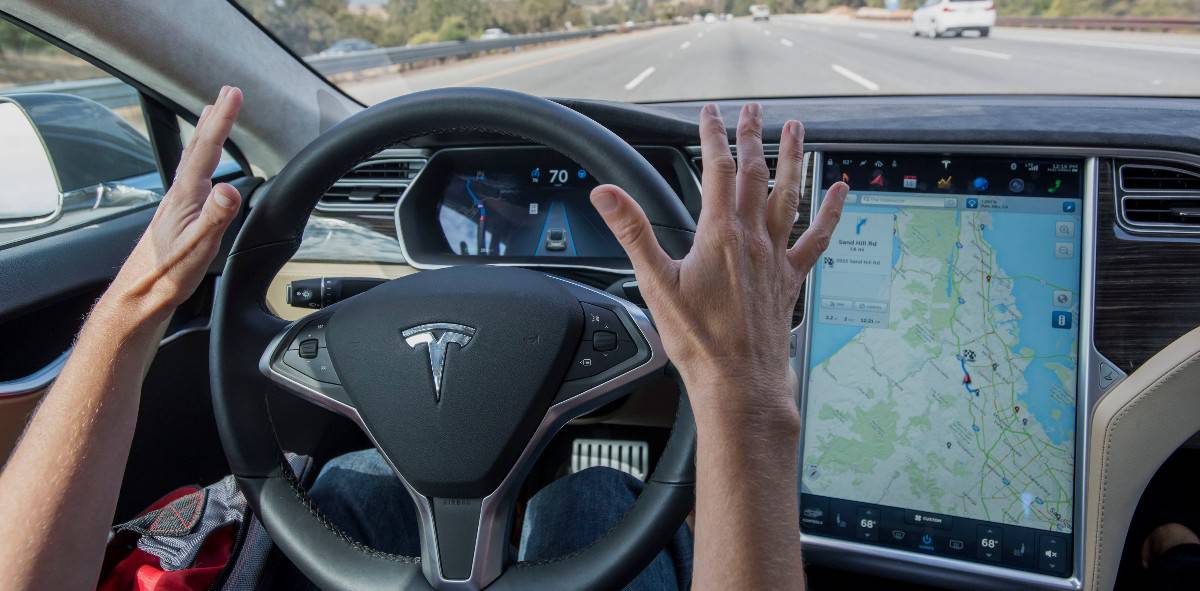 All of the company’s active safety features are powered by the Autopilot. It’s been in every car it produced at no additional cost to drivers. Instead, Tesla earns funds by charging for the convenience features offered by Autopilot.
All of the company’s active safety features are powered by the Autopilot. It’s been in every car it produced at no additional cost to drivers. Instead, Tesla earns funds by charging for the convenience features offered by Autopilot.
In 2016, Tesla sent out an update that enables full-speed automatic emergency braking in the Autopilot hardware suite (2.5).
In 2017, the American Automobile Association raised the insurance rates for owners after the report from the Highway Loss Data Institute. This report claimed that Model S crashes occurred 46% more often than other vehicles plus were 50% more expensive to repair. The Model X was shown to crash 41% more often with repairs costing 89% more than comparable cars. Because of this, AAA raised the insurance rates on all Tesla automobiles by 30%. Tesla argued the results but failed to provide any evidence that suggested otherwise.
Tesla Safety Recalls
As of early 2018, there had been six product recalls for the Tesla Model S, two for the Model X, and another two for the Roadster. The Model X received 2,700 recalled vehicles in 2016 due to a faulty locking hinge in the third-row seats. After that, in April 2017, the company recalled 53,000 2016 vehicles due to faulty brakes. The claim was the brakes could stick and prevent vehicles from moving. This recall accounted for about 70% of the automobiles on the road.
Then, in March 2018, Tesla issued another recall of 123,000 Model S vehicles built prior to April 2016. This was due to the susceptibility of corrosion in the power steering bolts which could fail and require increased force in order for the driver to control their vehicle.
Hacking Concerns
Tesla has been the target of some hacking concerns. In the summer of 2015, two researchers noted they could take control of a Model S by hacking into the entertainment system. This hack was only possible with physical access to the vehicle. In response, Tesla released a security update the day after this vulnerability was announced.
Then, in September 2016, Tencent’s Keen Security Lab researchers illustrated a remote attack on a Model S. With this attack, they were able to control the vehicle in both Parking or Driving Mode without having physical access. They compromised the CAN bus while the web browser in the vehicle was in use. The vulnerability was patched within ten days. Then, in 2017, the same company hacked into the doors of a Model X.
In early 2018, an Amazon Web Services account was found to be vulnerable to hacking. Security researchers accessed information from the Internet that the account was exploited for cryptocurrency through the bug bounty program. The company confirmed that this concern didn’t not violate the consumer’s safety, security, or privacy.
Tesla Consumer Satisfaction Reports & Dependability Ratings
According to Consumer Reports, Tesla satisfies their car buyers more than any other automaker. The company was ranked number one on the list of 2017 Cars Ranked by Owner Satisfaction. This beat out the Porsche by five points. In fact, from 2013- 2016, Consumer Consumer Reports also ranked the company with extreme markings in the consumer satisfaction surveys.
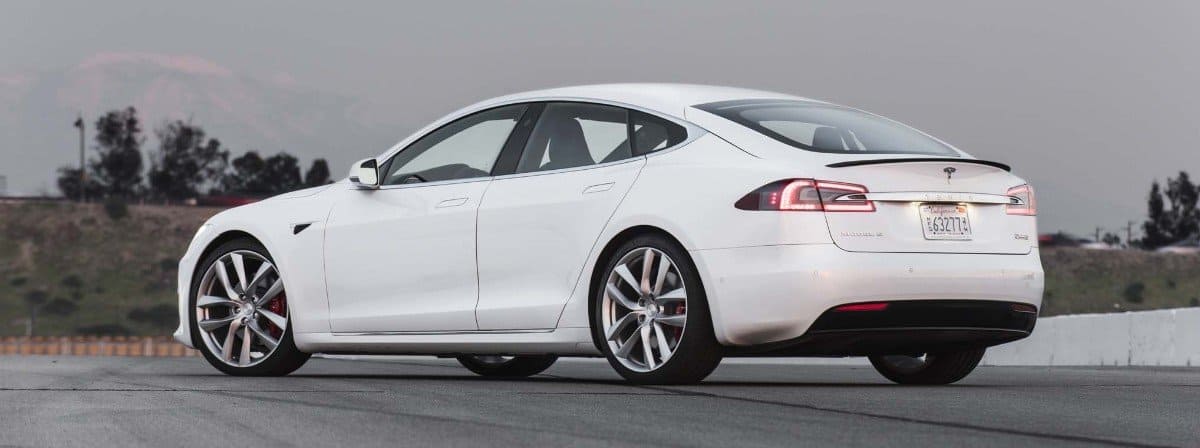 The Model S sedan was at the top of the list of buyers who were satisfied with the purchase after three years. In this same evaluation, the Model X landed in eighth place. These rankings weren’t based on reliability or quality, but simply the owner’s expectations of the vehicle. So it appeared, that despite some quality concerns with the Model X, most owners were satisfied.
The Model S sedan was at the top of the list of buyers who were satisfied with the purchase after three years. In this same evaluation, the Model X landed in eighth place. These rankings weren’t based on reliability or quality, but simply the owner’s expectations of the vehicle. So it appeared, that despite some quality concerns with the Model X, most owners were satisfied.
Are Tesla vehicles reliable? The consensus seems to say not really. The Model S has earned an average dependability rating. In fact, Consumer Reports had nothing but praise to give the Model S in every area other than reliability. They cited concerns with the infotainment system, power and charging equipment, plus the drivetrain.
One of the reasons the vehicles are unreliable is due to the amount of new technology used. Many premium brands are guilty of adding so much technology that the cost to repair and replace becomes astronomical. This results in lower dependability scores. That paired with the recall history of the vehicle leads people to see Tesla as unreliable.
Tesla Awards
Tesla has won numerous awards in the automobile world, many of which were for the Model S.
Model S
In 2012, they won CNET’s Tech Car of the Year award. They also took home the Best of What’s New list award from Popular Science. Among the prestigious awards came Time Magazine Best 25 Inventions of the Year.
In 2013, the company tool AutoGuide’s Reader’s Choice Car of the Year award. They also claimed the World Green Car of the Year award. They were also Automobile Magazine’s Car of the Year through a unanimous decision, plus they earned the Green Car Reports’ Best Car to Buy award.
What’s most significant in 2013 was how they won the Motor Trend 2013 Car of the Year. This came through a unanimous decision. In addition, they were the first winner in the history of the award that didn’t have an internal combustion engine. Yahoo Autos also labeled them as Car of the Year during 2013. Finally, they took home the Natural Resources Canada 2013 EcoENERGY for Vehicles Awards given in the full-size category.
In 2014, Consumer Reports listed the Model S as the ‘Best Overall’ vehicle for the year. This was decided among 10 categories of cars, SUVs, and light trucks. They claimed the Model S was a car “brimming with innovation.” The Model S was then listed as one of the top 10 cars that changed the world from the Telegraph. They are the same people that listed Tesla’s electric sedan as the most important vehicle during the last 20 years.
In 2015, Tesla broke the record with Consumer Reports by earning the highest score ever. They actually broke the rating scale of the company by winning 103 points out of 100. Because of this, Consumer Reports reevaluated their point system.
Model X
 In 2015, the Model X was awarded AutoGuide’s Reader’s Choice Green Car of the Year award and Luxury Utility Vehicle of the Year award.
In 2015, the Model X was awarded AutoGuide’s Reader’s Choice Green Car of the Year award and Luxury Utility Vehicle of the Year award.
In 2016, they were the recipient of the Golden Steering Wheel. This prestigious automotive award was given in the “Large SUV” segment.
In 2017, it earned honors as the Top Green Vehicle from the American Automobile Association. It also took home best in the SUV/Minivan segment with a mind-blowing score of 100 out of 130. It was also awarded with the Australian Good Design Award from the Automotive and Transport category. What seems most interesting is that at the end of 2017, Forbes listed the Model X 100D as the Best Vehicle of the Year.
Where to Charge a Tesla?
Starting in 2012, the company launched a network consisting of nationwide 480-volt Supercharger stations that boasted of being fast-charging. By May 2018, there were 1,229 of these stations on a global scale that offered almost 10,000 superchargers.
These superchargers operate on a proprietary DC technology providing up to 120 kW of power. Cars expect to receive full charges within 75 minutes. That’s what makes Tesla one of the highest recommended cars for traveling long distances based on charging delays.
Every car comes with the Supercharging hardware standard. All cars that were ordered after early 2015 also received 400 kWh worth of Supercharging credits. That equates to 1,000 miles free for a year. All cars sold prior to that received free supercharging.
Because of a complaint filed, Tesla began charging a fee in December 2016 for idle cars. This meant if someone continued to occupy a station despite the fact that they were fully charged, they would have to pay.
In 2014, the company launched what was known as the Destination Charging Location. Chargers were provided to shopping centers, restaurants, resorts, hotels, as well as full-service stations. They offered on-site charging with double the power when compared to a conventional charging location. In April 2016, the company also started European destination charging. There were an additional 150 locations added on later. Tesla installs all chargers for free and drivers find them by using the navigation system in the car.
Snapshot of Tesla Company
Tesla, Inc. is a multinational corporation from America. They specialize in creating electric vehicles, manufacturing solar panels and producing energy storage. Their manufacturing operations are based in Palo Alto, California. They also sell Tesla Powerwall and Powerpack batteries, solar roof tiles, and solar panels.
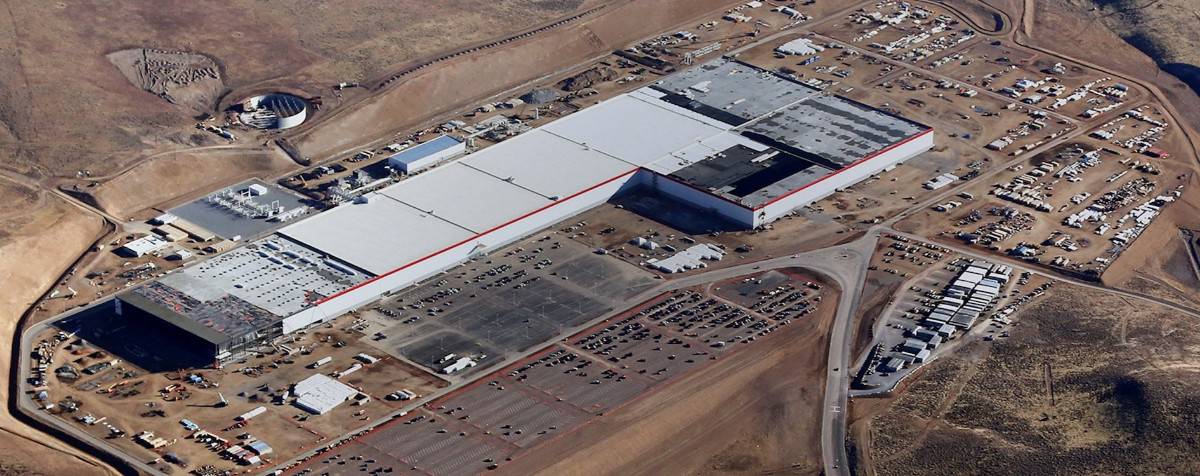 The company operates numerous assembly plants and production facilities. One of the most known is the Gigafactory 1 located outside of Reno, Nevada. This Gigafactory mainly produces the battery packs and batteries for energy storage products and Tesla vehicles. They also have a central vehicle manufacturing facility located in Fremont, California.
The company operates numerous assembly plants and production facilities. One of the most known is the Gigafactory 1 located outside of Reno, Nevada. This Gigafactory mainly produces the battery packs and batteries for energy storage products and Tesla vehicles. They also have a central vehicle manufacturing facility located in Fremont, California.
On top of the corporate headquarters, they also operate several larger factories that make components and vehicles. They also have numerous galleries and showrooms located across the globe.
Tesla’s other main hub is referred to as Gigafactory 2. It is planted inside the city of Buffalo, New York at the location of an old plant for Republic Steel. Panasonic partners with the company to assemble panel modules. Incentives are provided to the company from the program referred to as Buffalo Billion just for having the plant there.
The European headquarters for the company are located in Amsterdam with the service center operating in Tilburg, Netherlands.
Annual Sales
In 2015 and 2016, the Model S became the world’s best-selling plug-in electric car. Global sales topped to 200,000 units in the fourth quarter of 2017. Total production for the company reached 300,000 in February 2018. That was due to the release of the Model X, its crossover SUV, in September 2015 and the Model 3 released in July 2017.
It’s important to note that Tesla deliveries vary due to regional issues like registration and shipping availability. The company doesn’t follow auto industry standard of regular monthly reporting. Many monthly sales figures are merely estimated by the media instead.
In addition, they enjoy many forms of both state and federal subsidies. In 2015, the additional money received equaled a minimum of $30,000 for each vehicle sold, or about $4.9 billion.
Business Operations
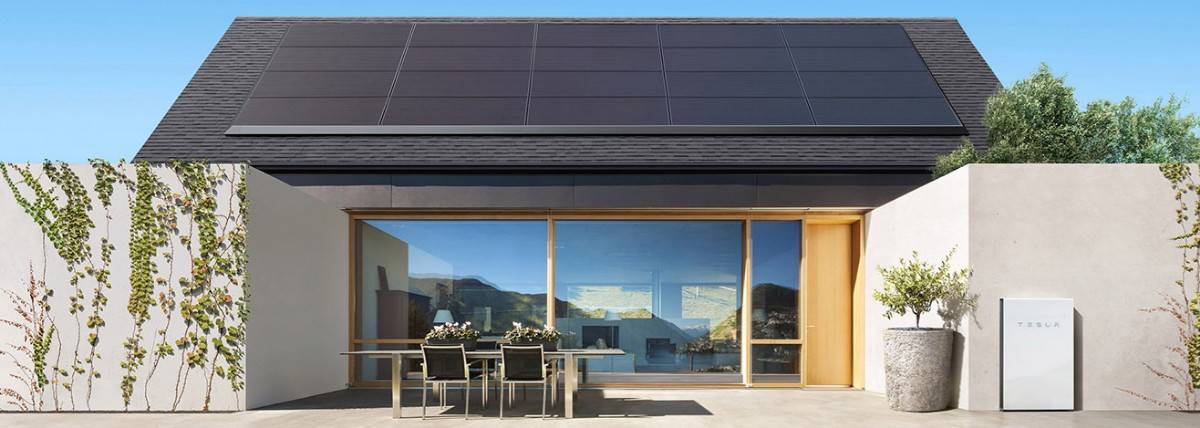 Aside from manufacturing vehicles, Tesla purchased SolarCity Corp in August 2016 for $2.6 billion in stock. They are the most significant nationwide installer of rooftop solar systems. The eventual goal is for customers to be able to purchase these solar panels in Tesla stores. They’ll be used to power homes and the company’s vehicles.
Aside from manufacturing vehicles, Tesla purchased SolarCity Corp in August 2016 for $2.6 billion in stock. They are the most significant nationwide installer of rooftop solar systems. The eventual goal is for customers to be able to purchase these solar panels in Tesla stores. They’ll be used to power homes and the company’s vehicles.
Elon Musk is owner or shareholder in numerous other business ventures. These include:
The Boring Company – designing an extensive network of tunnels, starting with Los Angeles.
Google DeepMind – using artificial intelligence to create good for the world
The Musk Foundation – provides grants for renewable energy research, human space exploration, pediatric research, plus science and engineering education
Neuralink – looking to create a system which allows humans to communicate with technology without the use of an actual, physical interface.
NeuroVigil – develops products which monitor brain activity.
SpaceX – created the first privately developed, liquid-fueled rocket that orbited Earth
Stripe – behind the scenes operation for Apple Pay and several other online vendors.
Surrey Satellite Technology – makes inexpensive, small satellites.
X Prize Foundation – offers prizes for competitions in the energy efficiency, education, health or community fields.
Tesla Partnerships
Tesla operates like an OEM company by delivering powertrain components to various other automakers. They have numerous business partnerships, including:
Daimler AG
In 2007, the two companies began a partnership together. Then, in 2009, Daimler purchased fewer than 10% of stake in Tesla at $50 million. In this deal, Herbert Kohler took a board seat at the company. He is also an executive officer at Daimler. Later, in 2009, Daimler sold 40% of that previous acquisition off to Aabar Investments PJSC. Not long after, they sold their remaining holdings.
Tesla builds some electric-powertrain parts to go in a Mercedes-Benz A-Class E-Cell. This is their electric car featuring a 120 mile range. It has a battery measured at 36 kWh that holds about 4,000 lithium-ion cells. They also build the electric motor inside the Mercedes-Benz B-Class ED. This motor is rated at 134 horsepower with a 36 kWh battery. It features a range of 124 miles and its top speed is 93 mph.
Smart cars have a powertrain built by Tesla as well as a 14 kWh lithium-ion battery. In addition, Tesla supplies the battery packs inside Freightliner Trucks’ Custom Chassis electric van.
Toyota
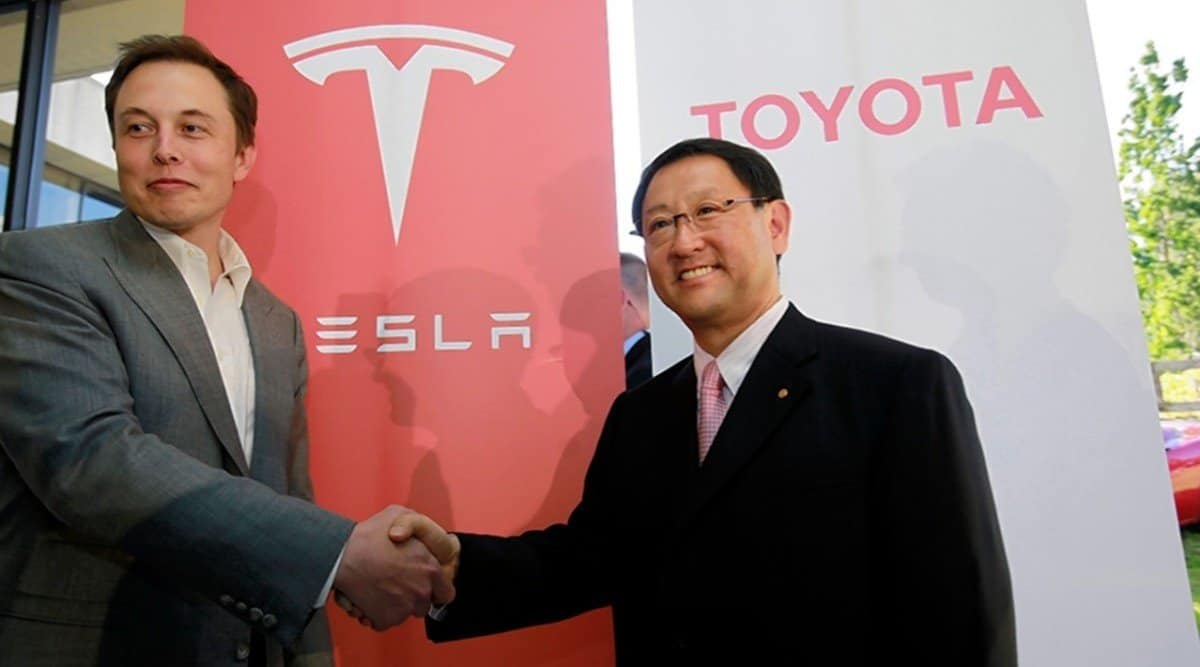 In 2010, Toyota and Tesla announced their partnership to create electric vehicles. Toyota invested $50 million and Tesla purchased some of the NUMMI factory for $42 million. They collaborated together to develop electric parts, vehicles, engineering support and production systems.
In 2010, Toyota and Tesla announced their partnership to create electric vehicles. Toyota invested $50 million and Tesla purchased some of the NUMMI factory for $42 million. They collaborated together to develop electric parts, vehicles, engineering support and production systems.
Together, they created a second generation to the Toyota RAV4EV. It was highlighted at the 2010 Los Angeles Auto Show. In total, 35 of the converted RAV4s were built for evaluation. Both the powertrain components and lithium metal-oxide batteries were produced by Tesla. In 2012, a production version of the vehicle was released. The powertrain components, battery pack, and electronics were similar to the Model S.
In 2017, Toyota sold all of its shares in the company and halted all cooperation. At this time, they created their own division to focus on electric car production.
Panasonic
In 2010, Panasonic and Tesla began working together to develop a new nickel-based lithium-ion battery cell for use inside electric vehicles. This was just part of Panasonic’s investment of $1 billion in lithium-ion cell research and production.
In 2014, Panasonic began working with Tesla in the Gigafactory 1. They’ve also collaborated on the production of PV cells and modules.
Airbnb
In 2015, the company partnered with Airbnb by providing chargers at various host houses, mainly in California.
Liberty Mutual
The company also partnered with Liberty Mutual to offer auto insurance plans geared toward electric cars. This plan became available to consumers at the end of 2017.
Tesla Logo
 For years, many people wondered what the Tesla logo meant. In 2017, Musk confirmed what many people already suspected. The ‘T’ design is supposed to represent a cross-section of an induction motor. The company’s logo shows the precise moment when electricity forms into forward motion, which is the primary goal of the company.
For years, many people wondered what the Tesla logo meant. In 2017, Musk confirmed what many people already suspected. The ‘T’ design is supposed to represent a cross-section of an induction motor. The company’s logo shows the precise moment when electricity forms into forward motion, which is the primary goal of the company.
Museums
Elon Musk contributed money to the Tesla Science Center at Wardenclyffe in New York. This museum offers several programs located at the site of Nikola Tesla’s former laboratory.
In addition, Glasgow’s Riverside Museum in Scotland currently houses a Tesla Model S P85+. It was donated by businessman Chris Clarkson to be part of the automotive engineering ingenuity exhibit.
Tesla Finance
Tesla operates its own financial division to help consumers own their vehicles. The company offers various leasing terms as well as financing options. They also accept trade-ins on new vehicles as well. In addition, they provide several incentive programs to buyers, depending on what state they reside in. A $7,500 federal income tax credit is available to all consumers on top of their state rebates.
Providing insurance to Tesla car owners, the company partnered with Liberty Mutual. Coverage includes new car replacement, guaranteed rates for a year, optional 24-hour roadside assistance, and Claims Valet Service.
The financial division also handles setting up chargers for home use. They offer installation in several states to install the dedicated circuit for charging vehicles. In the states where they don’t have their own electricians, they maintain a list of independent contractors they recommend.
Tesla Finance also offers an extended service agreement for their vehicles. This extends the Basic Warranty. It also covers the cost of replacement parts or repair due to defects for an extra 50,000 miles or four years, whichever comes first. In addition, all pre-owned Tesla vehicles come with a four-year or 50,000-mile Battery and Drive Unit Limited Warranty.
Tesla also gives customers a wide variety of convenience services. Mobile service is provided by a qualified technician from the company. Not every service is able to be performed at the client’s home, but the company will valet the car to the nearest Service Center if need be. They also provide loaner vehicles while cars are in for service.
Tesla Dealers
Where to buy a Tesla? That seems to be a common concern for many consumers. Their first retail location was in Los Angeles, California. Now, they operate numerous galleries and stores throughout many of the states. Many of these locations are found in shopping malls and operate solely as a showroom. Some are located in states where there are restrictions on discussing any pricing or financing. In addition to visiting a gallery, customers can purchase a Tesla online.
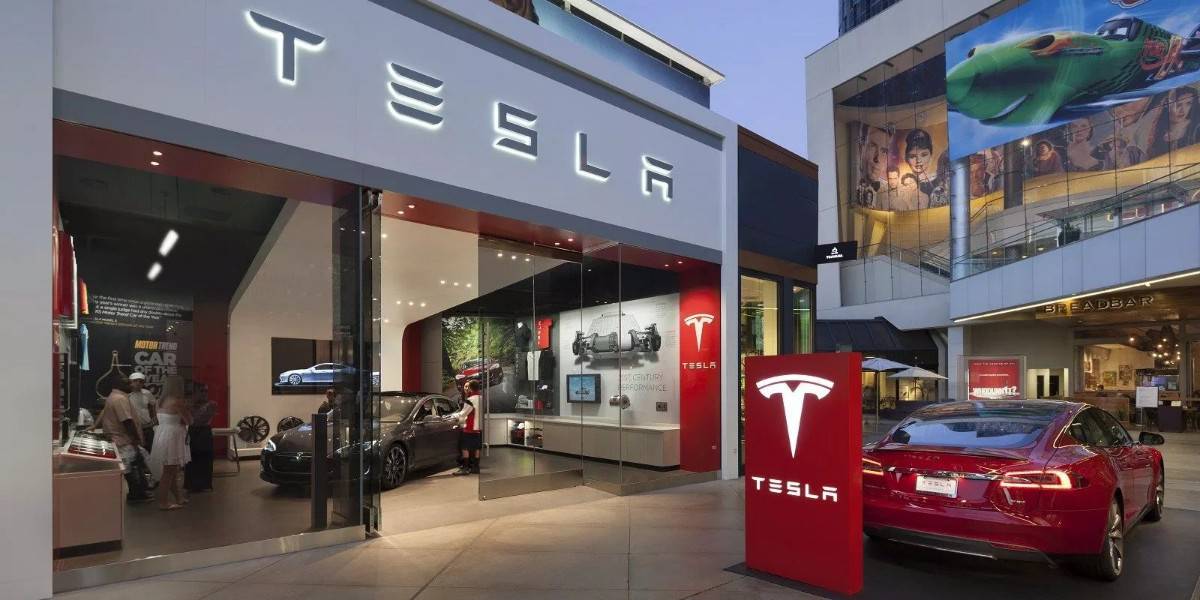 In total, there are over 100 of these showrooms currently in the United States. They operate in 27 states and California has the most locations with 30 of their stores.
In total, there are over 100 of these showrooms currently in the United States. They operate in 27 states and California has the most locations with 30 of their stores.
The company’s strategy of owning stores and providing direct sales is different than any other dealership model. While other automakers have independently owned dealerships, Tesla prefers selling direct to customers. 48 states have specific laws that ban companies from selling cars directly to the customer. As a result, dealership associations throughout the country have sued Tesla in relation to their sales practices. It’s interesting to note that the Federal Trade Commission has advocated for direct manufacturing sales. They claim it would save consumers an average of 8% in the purchase of vehicles.
In addition to their operations in the United States, the company has stores in Europe, Canada, Japan, China, South Korea, and Australia.
10 Interesting Facts about Tesla
#1 – Top Gear criticized the Roadster which led to a legal battle between Tesla and the TV show. Top Gear was the winner.
#2 – The Model X features a biohazard air filter inside the cabin.
#3 – The Model X weighs 5,594 pounds which is more than any electric vehicle.
#4 – The Model S has a 0-60 mph time of 2.5 seconds when in “Ludicrous” mode.
#5 – “Summon” is a feature that allows you to phone your Model S and have it meet you at the door.
#6 – Entire trains, among other products, are recycled at the Gigafactories to produce batteries.
#7 – Tesla’s factories are powered by 100% renewable energy.
#8 – The company has never turned an annual profit.
#9 – Elon Musk has invested over $70 million of his own money to the company.
#10 – Musk earns around $37,000 per year from Tesla.
Tesla FAQ
When Was Tesla Founded? Tesla Motors Incorporated was founded in 2003 by five members with the chairman Elon Musk at the helm.
Who Created Tesla Motors? The company was originally founded by Marc Tarpenning and Martin Eberhard but JB Straubel, Ian Wright, and Elon Musk are also classed as the company’s co-founders as well.

